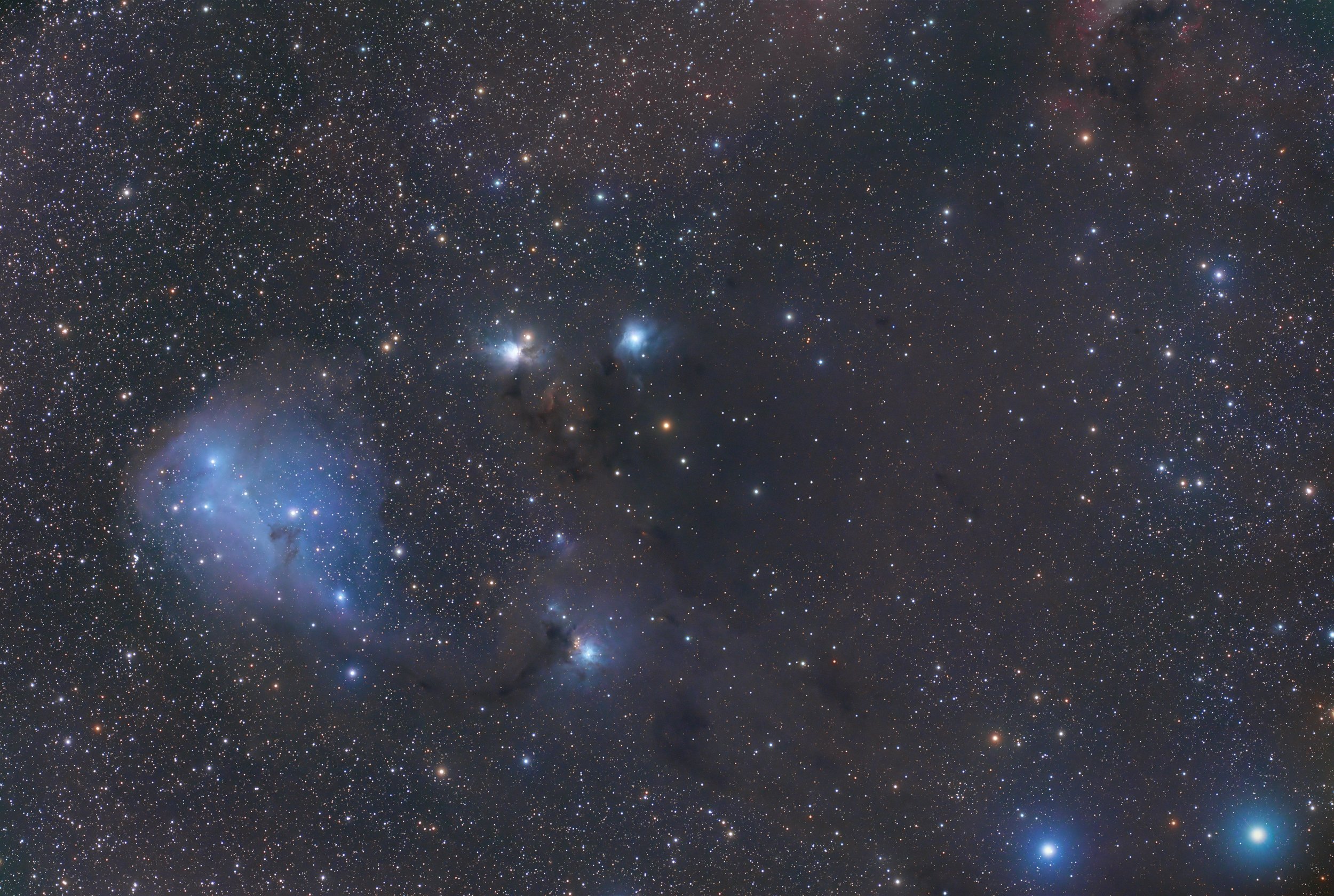
AAPOD2 Image Archives
Sort 2025 By Month: January | February | March | April | May | June | July | August | September | October | November | December
Venus through Twilight Colors
The transition from twilight to night is depicted, spanning approximately 26 minutes at this latitude.
This image is a combination of photographs taken over three days—October 30, October 31, and November 2.
North America and a Butterfly
### North America Nebula and Butterfly Nebula
NGC 7000, also known as the North America Nebula, is a vast emission nebula situated right beside the bright blue star Deneb in the constellation Cygnus. This nebula gets its name due to its resemblance to the North American continent when viewed through telescopes or in astrophotographs. The nebula spans about 50 light-years and is located approximately 1,600 light-years from Earth. It is part of the same molecular cloud as the Pelican Nebula and is one of the most well-known and photographed nebulae in the night sky due to its distinctive shape and vibrant colors.
The Butterfly Nebula, or IC 1396, lies close by in the same rich star field of Cygnus. This image, taken at the Barskoon Valley, situated between tall mountains in both the east and west, showcases both these stunning nebulae against the backdrop of the Milky Way. IC 1396 is a large, bright emission nebula that contains an open cluster of stars and several dark nebulae, including the prominent Elephant's Trunk Nebula. The region is an active site of star formation, where intense ultraviolet radiation from young, massive stars ionizes the surrounding hydrogen gas, causing it to glow and reveal the intricate structure of the nebula.
600 Years of Trailing
Star trails over Tash-Rabat, a stone caravanserai built in the 15th century, create a mesmerizing display that reflects the Earth's rotation. Located in the Kyrgyzstan mountains, Tash-Rabat's remote and dark skies provide an ideal setting for capturing the celestial dance. In a long-exposure photograph, the stars appear to trace circular paths around the North Star, Polaris, which remains relatively stationary in the sky due to its alignment with Earth's rotational axis.
The reason the stars trail in circular patterns is because of the Earth's rotation. As our planet spins on its axis, the stars appear to move across the sky from east to west. In the Northern Hemisphere, when looking northward, the stars seem to rotate counterclockwise around Polaris. The closer the stars are to Polaris, the smaller the circles they trace; stars further away from Polaris create larger arcs. This effect is beautifully captured in long-exposure images, showing concentric circles centered on the North Star, which serves as the anchor point in the starry sky over the historic Tash-Rabat.
Belt of Venus over Mt. Everest
The Belt of Venus is a mesmerizing atmospheric phenomenon that graces the twilight sky. Just before sunrise or after sunset, a delicate pinkish band, known as the Belt of Venus, stretches across the horizon, gently embracing the fading light of the Sun and casting an enchanting aura upon the Earth's celestial canvas.
Full Moons of 2021
Image Description and Details :
I was very lucky to be able to capture all the full moons of 2021. The image represents 12 full moons of 2021 with their popular names, distance from Earth and angular diameter. The centre piece is a mosaic made with strips from all the 12 full moons.All the images were captured with the same camera (Nikon D5600) and lens (Sigma 150-600c) at a same focal length (600mm). The individual moons are a stack of 300 images each.
Copyright: Soumyadeep Mukherjee
Ariane V carrying James Webb Space Telescope
The historic launch of JWST took place on 25th December 2021. The visuals were sudden as we did not expect to come across the Ariane V rocket from West Bengal. Initially we thought it to be a comet (including Leonard for a moment) and confirmed the object sometime later. It was a "Dream come true" for us.
The first image shows Ariane V trailing past Sculptor Galaxy. The second image is a sequence captured over 15 minutes and the third image was its first visuals.
Exif: 2 seconds, f/2, ISO 500, 135mm, Stack of 40 images (Image 1), Stack of 10 images each (Image 2), Stack of 10 images (Image 3).
Gear: Nikon D5600, Samyang 135mm (on a tripod)
Processing: Sequator, Pixinsight, Adobe Camera Raw, Photoshop
Location: Sukna, West Bengal, India
Date: 25th December 2021
Copyright: Samit Saha & Soumyadeep Mukherjee
Battle of the Moons
Image Description and Details :
The image displays the angular size difference between a "super" moon and a "micro" moon. The micro moon is the Cold Moon of 2020 (captured on 30th December 2020) and the super moon is the Pink Moon of 2021 (captured on 27th April 2021). The super moon gets almost 10% bigger in the night sky due to its closer approach to Earth.Gear: Nikon D5600, Sigma 150-600cPost-processing: PIPP, Autostakkert, Adobe Camera Raw, PhotoshopCapture Date: 30th December 2020 and 27th April 2021Location: Kolkata, India
Copyright: Soumyadeep Mukherjee
The Journey of AR12794-2795
Image Description and Details :
This image is a blend of 9 images taken on 9 days from 25.12.2020 to 02.01.2021. This shows how the sunspot AR12794 and AR12795 moves along the solsr disk due to Sun’s rotation. Also noticable is the change in thr apparent size of the sunspots where AR12795 ultimately becomes a faculae. The photo was taken with Nikon D5600, Sigma 150-600c and Thousand Oaks Solar Filter (white light). Post-processed via PIPP, Adobe Camera Raw and Photoshop.
Copyright: Soumyadeep Mukherjee










